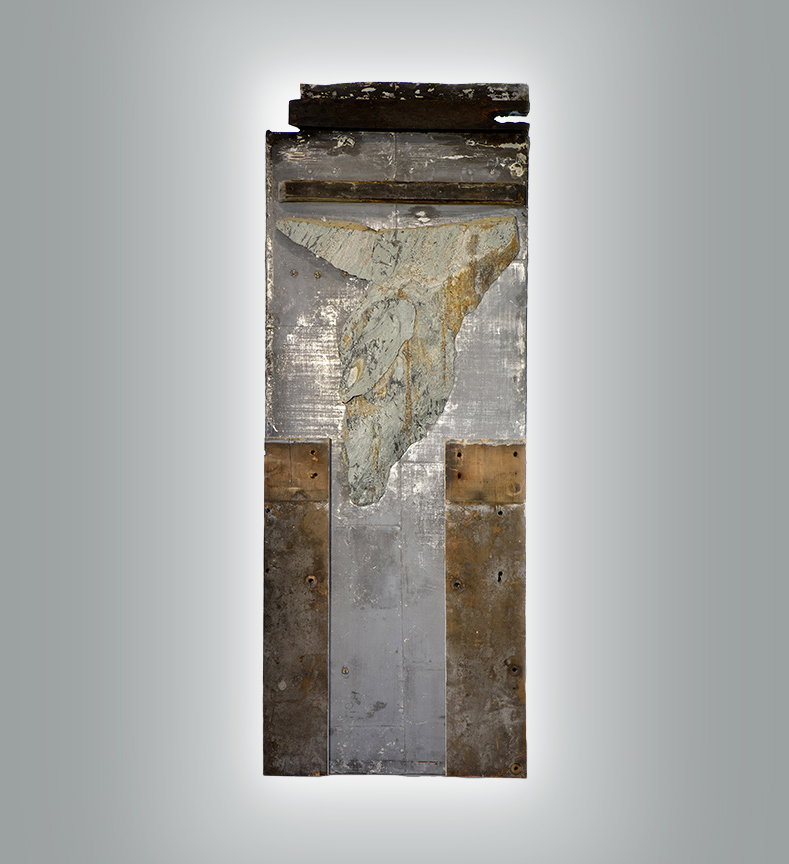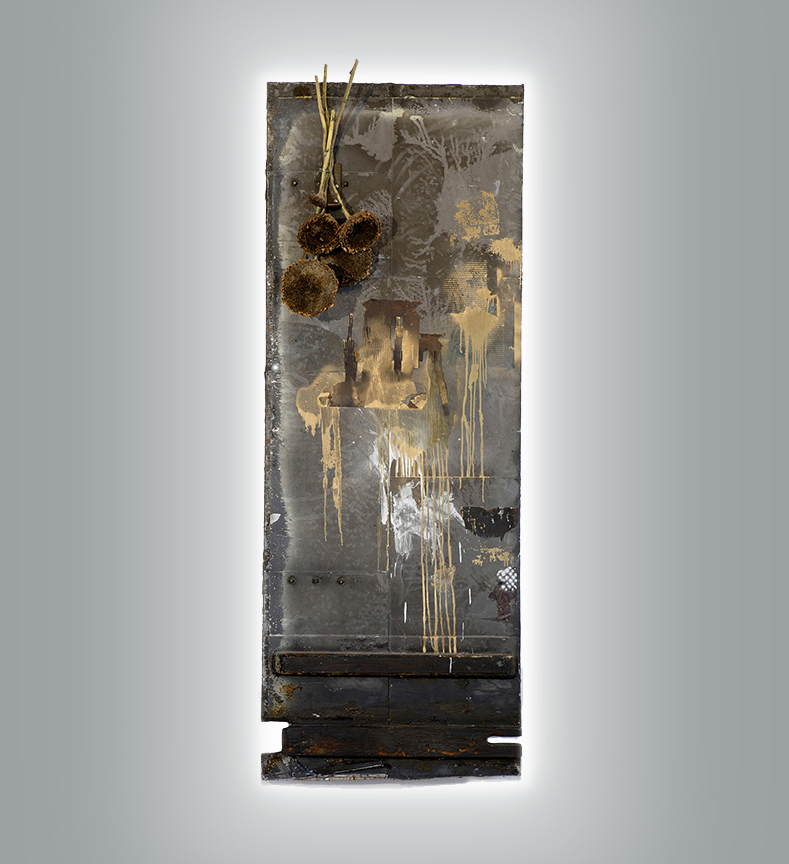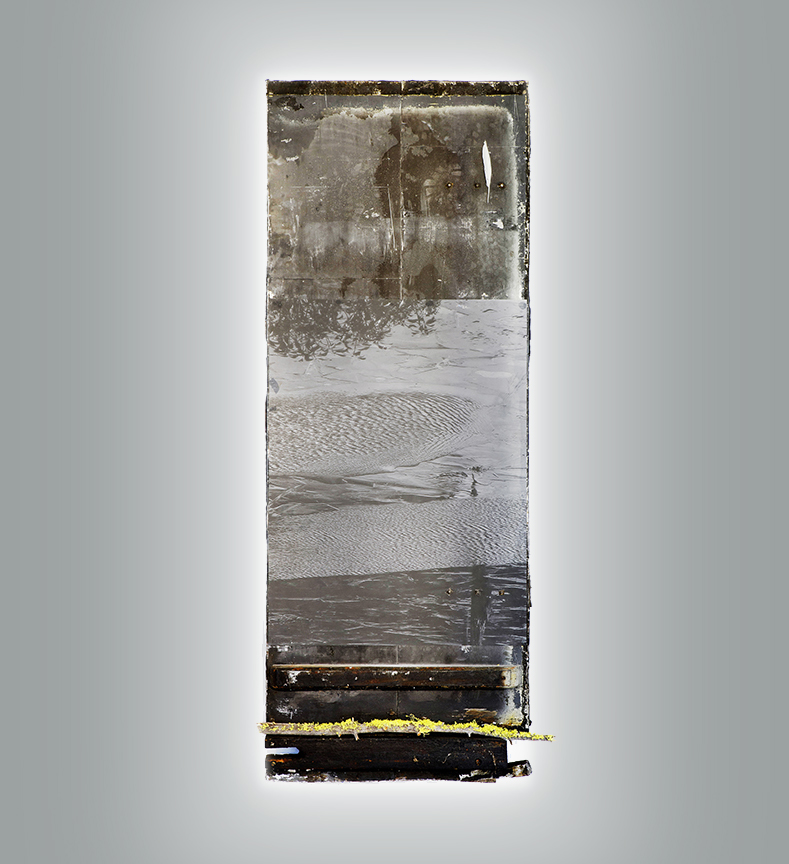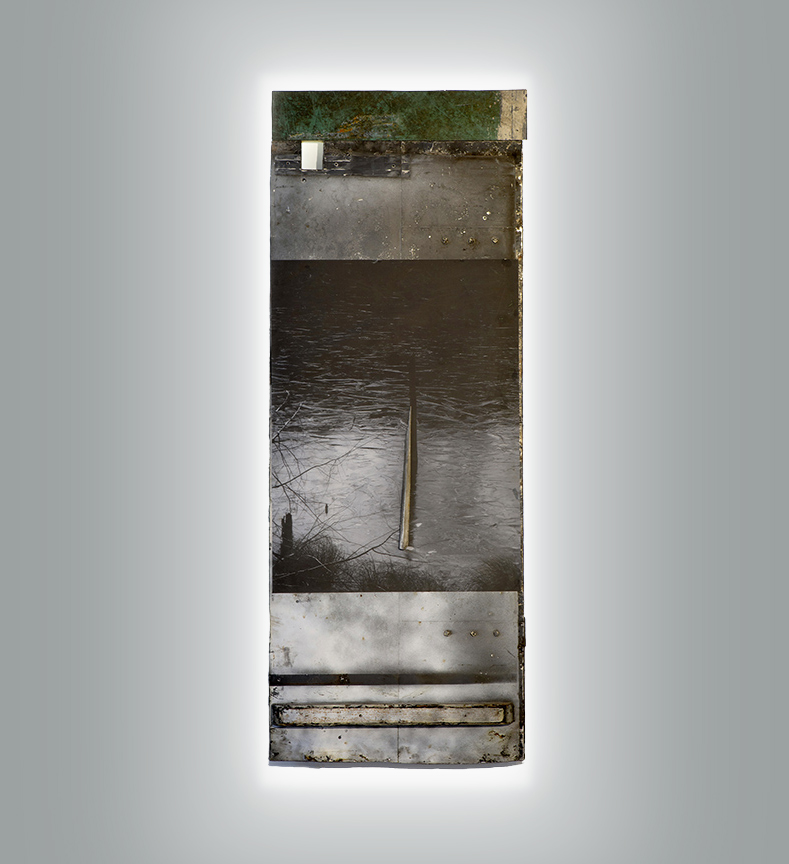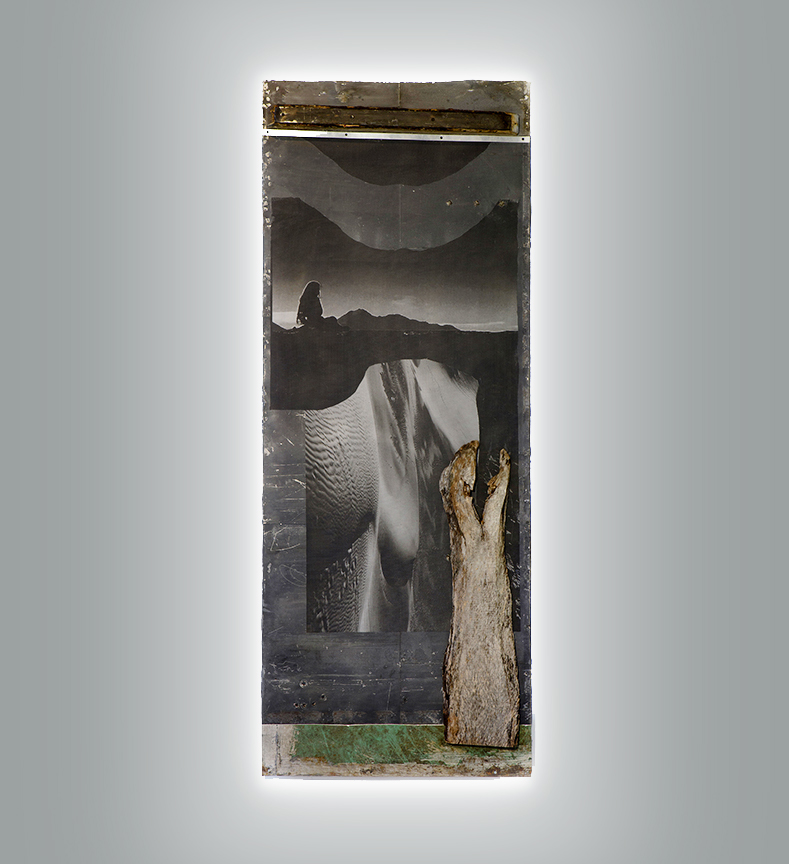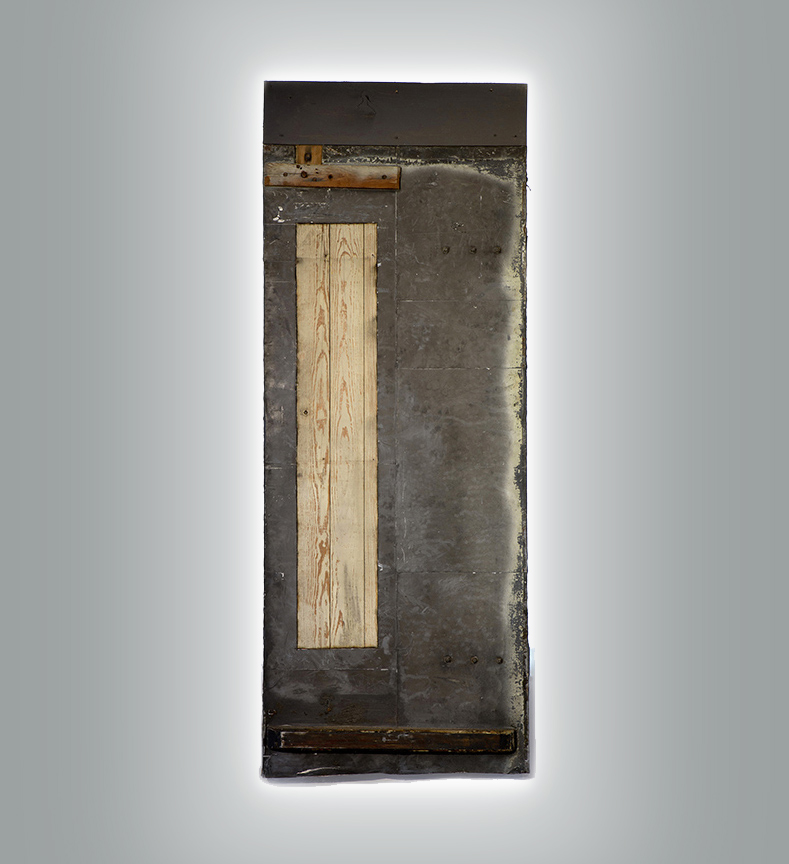Artworks / Sculptures / Relief Sculptures
Permutations
One can say that the entirety of Muss’s art practice is inspired by the simple act of observing and listening to her surroundings, waiting for the “Eureka moment” in which whatever her gaze captures sparks an idea that will become a work of art. Her practice inherently requires a slow process of attention, learning and reflection that balances the perception of the material and the subjective worlds we live in, and opens possibilities for grasping an understanding of the world through a poetic gaze, while granting access to realities far beyond our mundane perception, while, at the same time, being a part of it. Such is the case of the Permutations series (2015-2016), a group of back lit large-scale pieces created using recovered construction doors with overlapped metal panes, combined with natural elements such as woods and tree barks, paper and sea objects. The story lines of her sculptural pieces are subtle narratives, unlike the act of walking through a portal—a physical experience—, and more like hidden and subjective stories perceived by the viewer. In her latest works, Muss has also incorporated sound, allowing the experience to grow even more in the public’s mind. Many questions arise: How did these doors get here? Whose Doors, are they? What are these sounds and where do they come from?
Ideas of mythical creatures living in a world parallel to ours, or visions of sculptures that trigger a double material-subjective possibility are some of the challenges that the artist explores with the viewer. We connect with objects that are well-known — construction debris, doors, windows, cots — with something very emotional and less concrete, causing us to reflect on the emotion that objects and our experience with them trigger in our lives.
The immersive doors and thresholds, these portals, point to our domesticity, our home, the place where we belong. They explore how we, by the act of entering nature, are entering into our hearth, our childhood memories, and our place of identity. The woods where the installation is set becomes the backyard, a known place where we belong, returning to an anthropocentric moment in which nature is the background of everything human.

